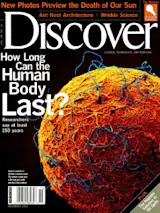A few years back, biodemographer Jay Olshansky called his friend Steve Austad, a gerontologist, after reading an outrageous quote attributed to Austad about aging. Olshansky, at the University of Illinois, and Austad, at the University of Idaho, have long shared an interest in the human life span. But they differ on some points. Austad had been quoted as saying that someone alive today could survive to the unprecedented age of 150.
“You don’t really mean that,” Olshansky told his friend.
“Oh yes, I do,” Austad replied. In fact, he would bet on it. Before long he and Olshansky had agreed to put $150 each into an investment fund, to be distributed to the relatives of the winner in 2150. They agreed that, in order for Austad’s progeny to collect, the 150-year-old has to be in reasonably good health and that proof of the person’s age has to be impeccable. By ...














